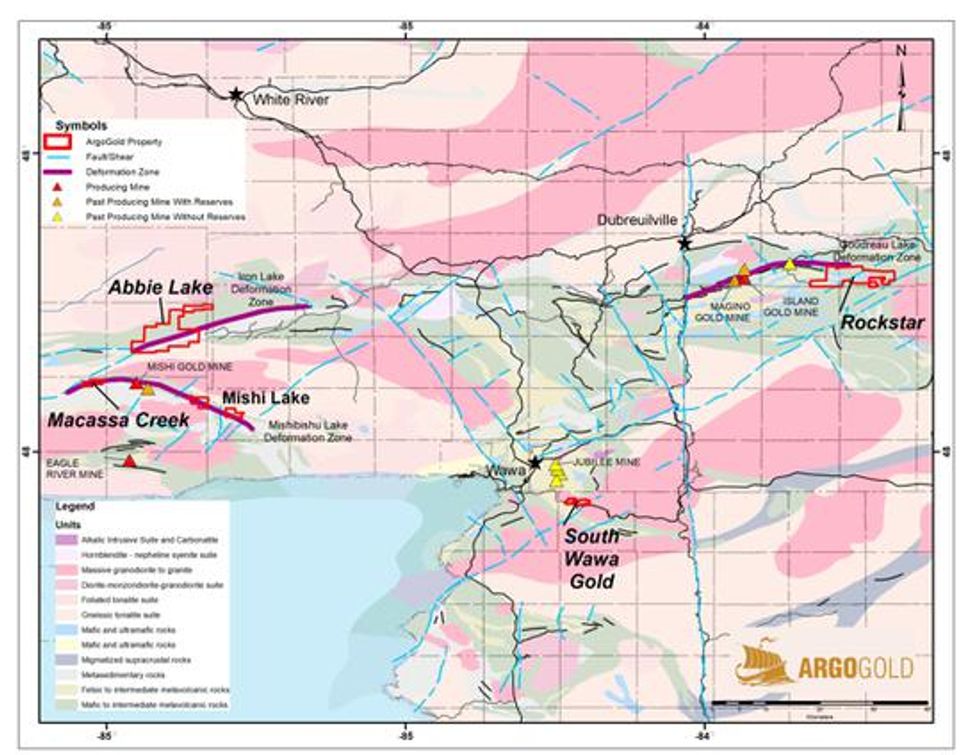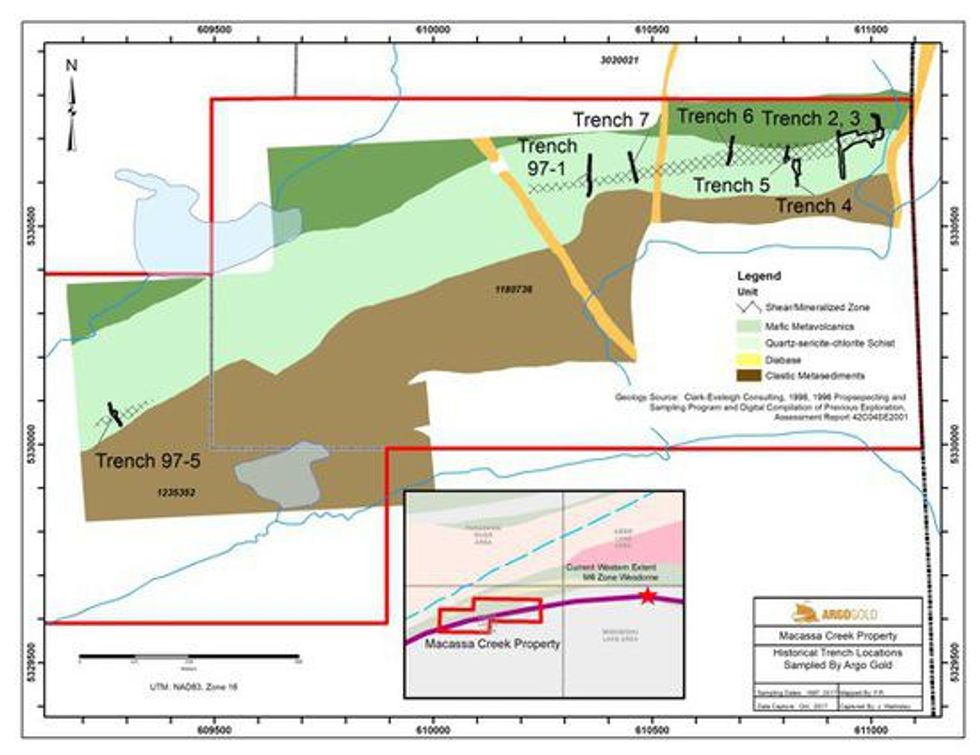- AustraliaNorth AmericaWorld
Investing News NetworkYour trusted source for investing success
- Lithium Outlook
- Oil and Gas Outlook
- Gold Outlook Report
- Uranium Outlook
- Rare Earths Outlook
- All Outlook Reports
- Top Generative AI Stocks
- Top EV Stocks
- Biggest AI Companies
- Biggest Blockchain Stocks
- Biggest Cryptocurrency-mining Stocks
- Biggest Cybersecurity Companies
- Biggest Robotics Companies
- Biggest Social Media Companies
- Biggest Technology ETFs
- Artificial Intellgience ETFs
- Robotics ETFs
- Canadian Cryptocurrency ETFs
- Artificial Intelligence Outlook
- EV Outlook
- Cleantech Outlook
- Crypto Outlook
- Tech Outlook
- All Market Outlook Reports
- Cannabis Weekly Round-Up
- Top Alzheimer's Treatment Stocks
- Top Biotech Stocks
- Top Plant-based Food Stocks
- Biggest Cannabis Stocks
- Biggest Pharma Stocks
- Longevity Stocks to Watch
- Psychedelics Stocks to Watch
- Top Cobalt Stocks
- Small Biotech ETFs to Watch
- Top Life Science ETFs
- Biggest Pharmaceutical ETFs
- Life Science Outlook
- Biotech Outlook
- Cannabis Outlook
- Pharma Outlook
- Psychedelics Outlook
- All Market Outlook Reports
Argo Gold Inc.- Exploration Program, Macassa Creek Gold Project, Wawa

Argo Gold Inc’s (CSE: ARQ) (“Argo Gold” or the “Company”) Macassa Creek 2017 field exploration activities included, re-establishing access, grab and channel sampling, geochemical orientation surveys and prospecting in conjunction with the compilation and review of historical geological and geophysical surveys.
Argo Gold Inc’s (CSE:ARQ) (“Argo Gold” or the “Company”) Macassa Creek 2017 field exploration activities included, re-establishing access, grab and channel sampling, geochemical orientation surveys and prospecting in conjunction with the compilation and review of historical geological and geophysical surveys.
The focus of exploration was on the eastern claim of the Macassa Creek Gold Project (Figure 1 and 2),where historical exploration and trenching had identified zones of gold mineralization. A program of channel sampling was initiated to verify results from the work completed by Murgor Resources in 1998. Additional channel sampling was completed in areas not covered by the initial 1998 sampling. Argo Gold’s channel samples were taken adjacent to and between Murgor channels to assess the gold content and continuity of grade, and width of the mineralized zone. Three north-south sections were sampled with soil geochemistry along the strike of the mineralized zone, using the Mobil Metal Ions analytical (MMI) method. Results are pending.
Channel sample results indicate that the zone is characterized by a wide expanse of low-grade gold mineralization with high-grade sections, characterized by the presence of thin discontinuous grey quartz veins. In the ‘Main Zone’ (Trench 2 & 3 on Figure 2 and Figure 3), composite sections have a weighted average grade of up to 3.24 g/t Au across 12.35 m (Channel 6, Figure 3, Table 1). Argo Gold’s assay results verify the presence of low-grade gold mineralization over significant widths (2.61 g/t Au across 10.54 m and 3.35 g/t Au across 6.51 m). High-grade pods can assay up to 61.6 g/t Au across 0.55 m (Channel 6, Figure 3, Table 1) and 26.6 g/t Au across 0.50 m (Channel 7A, Figure 3, Table 1). It is interpreted that the zone of gold mineralization has strike continuity.
Table 1: Trench Assay Composites for Murgor Resources (1998) and Argo Gold Inc. (2017)
| Murgor Composites (g/t Au/m) | * Argo Gold Composites (g/t Au/m) | |||||||
| Trench | Composite | Max. | Min. | Composites | Max. | Min. | ||
| Trench 2, 3 | Channel 1 | 0.51/18.9 | 3.64/0.4 | 0.01/0.9 | 0.74/1.42; 0.58/3.67; 1.09/2.58 | 3.43/0.5 | 0.01/0.68 | |
| Channel 2 | 1.21/9.4 | 5.42/0.6 | 0.16/1.0 | 0.63/3.2; 1.08/7.58 | 3.98/0.76 | 0.221/0.44 | ||
| Channel 3 | 0.53/14.55 | 3.7/0.5 | 0.01/1.1 | 3.46/0.89 | 4.39/0.42 | 2.63/0.47 | ||
| Channel 4 | 0.34/7.35 | 1.21/0.65 | 0.01/1.1 | 1.06/0.28; 1.52/0.68 | 1.06/0.28 | 1.52/0.68 | ||
| Channel 5 | 0.48/9.25 | 2.54/0.5 | 0.01/0.45 | 0.6/3.17; 0.22/0.54 | 1.83/0.29 | 0.031/0.38 | ||
| Channel 6 | 3.24/12.35 | 61.59/0.55 | 0.01/0.3 | 0.49/0.63; 0.06/0.3 | 0.055/0.3 | 0.683/0.21 | ||
| Channel 7 | 1.27/12.45 | 9.28/0.35 | 0.01/0.15 | 2.28/3.25 | 9.3/0.32 | 0.095/0.6 | ||
| Channel 7A | On strike (between) Channels 7 and 8 | 2.61/10.54; 3.35/6.5 | 26.6/0.5 | 0.047/0.93 | ||||
| Channel 8 | 1.75/11.3 | 16.16/1.0 | 0.003/0.2 | 4.66/3.0 | 12.8/1.01 | 0.332/1 | ||
| Channel 8A | 1.11/8.7 | 4.28/0.5 | 0.01/0.5 | 1.85/2.09 | 3.63/0.83 | 0.442/0.6 | ||
| Murgor Composites (g/t Au/m) * Argo Gold Composites (g/t Au/m) | |||||||||
| Trench | Composite | Max. | Min. | Composites | Max. | Min. | |||
| Trench 4 | 1.165/2.45 | 2.12/0.75 | 0.142/0.6 | 1.03/2.28 | 3.12/0.73 | 0.006/0.9 | |||
| Trench 5 | 1.76/12 | 7.85/0.6 | 0.012/0.35 | 1.9/6.25 | 4.48/0.88 | 0.14/0.82 | |||
| Trench 5W | On strike with Trench 5 composite | 1.98/2.33 | 2.26/0.93 | 0.363/0.56 | |||||
| Trench 6 | 3.06/2.5 | 5.78/0.8 | 0.195/1.0 | 0.4/2.31 | 0.08/1.05 | .005/0.52 | |||
| 0.38/2.9 | 0.72/1.0 | 0.014/0.4 | 1.07/1.52 | 2.48/0.55 | .028/0.97 | ||||
| 0.33/3.85 | 0.98/0.4 | 0.04/0.7 | 0.18/0.52 | 0.724/0.65 | 0.04/0.28 | ||||
| Trench 7 | 0.54/5.5 | 1.11/0.9 | 0.09/1.0 | 0.9/0.44 | 0.75/0.39 | 0.13/0.53 | |||
| Trench 97-1 | 1.0/3.96 | 2.2/1.0 | 0.17/0.75 | 2.11/3.35 | 3.19/1.0 | 0.11/0.75 | |||
| Trench 97-5 | 1.8/5.85 | 5.03/1.05 | 0.29/0.7 | 0.24/4.48 | 2.39/0.6 | 0.08/1.7 | |||
*Note
See Figure 2 and 3 for locations.
Argo composites are composed of samples taken adjacent to Murgor samples and entirely bracketed by Murgor samples.
Argo samples are not 1:1 with Murgor samples, but represent sections of interest.
Murgor composites are calculated from assay results in assessment file: AFRI 42C04SE2002)
The known mineralized zone trends east-west and dips steeply north. Its is hosted by highly sheared and altered quartz-chlorite-sericite schists that are tectonically layered and drag-folded by northwest trending late faults with a left-hand sense of displacement. The zone of shearing is contained within the broader Mishibishu Lake Deformation Zone, which hosts Wesdome’s Mishi Gold Mine, located 3 km to the east. The mineralized zone occurs in the contact area between mafic metavolcanics to the north and metasedimentary rocks to the south, an area considered being a prime target for gold mineralization.
At the Main Zone (Figure 3) the mineralization extends over an exposed distance of 100 m, however, additional sampling of trenches suggests that the mineralization extends to the west for an additional 300 m. The composite assay results from the Main Zone are in the same range as those intersected by Wesdome to the east, in their drilling completed in 2015 and 2016 (Source: Wesdome News Release April 27, 2017). The mineralized horizon is interpreted to extend from the Mishi Gold Deposit through to the Macassa Creek Claims. The deposit model is that of a moderate-to low-grade, high tonnage deposit similar to the Mishi Gold Deposit.
Further work is recommended, with additional channel sampling of historical trenches. A focus on the Scuzzy Lake area to the west, is suggested, where numerous trenches identified gold mineralization (Source: Wasabi Resource 1985 MNDM: AFRI 42C04SE0046). Mechanical stripping and hydraulic washing should be used in extending historical trenches, followed by geological mapping and channel sampling. A systematic soil geochemical program along with a study of the correlation between historical drilling and surface results using 3D/GIS methods should provide additional targets for further follow-up work.
Activation Laboratories Ltd. in Ancaster, Ontario completed all the 2017 rock sample analyses. Samples were analysed for multi-elements using a combination of INAA/Total Digestion ICP-OES. Gold values greater than or equal to 2g/t where re-assayed by standard fire assay with gravimetric finish. Standard internal laboratory quality controls were used. Historical assays for Murgor Resources (1998) were completed by Accurassay Laboratories, Thunder Bay, Ontario using fire assay with a gravimetric finish. MMI Geochemical analysis will be completed by SGS Labs Burnaby B.C using MMI extraction followed by ICP-MS. Standard internal laboratory quality control will applied.
All channel and grab samples were taken by Argo Gold field personnel were identified with sample tags, and placed in plastic bags and sealed with secure plastic tie wraps. An aluminum tag with the inscribed sample number was glued to the rock channel. The samples were transported to the assay lab by the project geologist. The technical information in this news release has been prepared in accordance with the Canadian regulatory requirements set out in NI 43-101 and reviewed and approved by Delio Tortosa, P.Eng., a “Qualified Person” as defined by NI 43-101 and a Technical Advisor for Argo Gold.
About Argo Gold Inc.
Argo Gold is listed on the Canadian Securities Exchange under the ticker ARQ. Argo Gold is focused on gold exploration projects in central and northwestern Ontario. All of Argo Gold’s projects are 100% owned and have indications of economic viability. Argo Gold’s website is www.argogold.ca.
Judy Baker
(416) 786-7860
judybakertoronto@gmail.com
NEITHER THE CANADIAN SECURITIES EXCHANGE NOR ITS REGULATIONS SERVICES PROVIDER HAVE REVIEWED OR ACCEPT RESPONSIBILITY FOR THE ADEQUACY OR ACCURACY OF THIS RELEASE.
Forward-looking Information Cautionary Statement
Except for statements of historic fact, this news release contains certain “forward-looking information” within the meaning of applicable securities law. Forward-looking information is frequently characterized by words such as “plan”, “expect”, “project”, “intend”, “believe”, “anticipate”, “estimate” and other similar words, or statements that certain events or conditions “may” or “will” occur. Forward-looking statements are based on the opinions and estimates at the date the statements are made, and are subject to a variety of risks and uncertainties and other factors that could cause actual events or results to differ materially from those anticipated in the forward-looking statements including, but not limited to delays or uncertainties with regulatory approvals, including that of the CSE. There are uncertainties inherent in forward-looking information, including factors beyond the Company’s control. The Company undertakes no obligation to update forward-looking information if circumstances or management’s estimates or opinions should change except as required by law. The reader is cautioned to place undue reliance on forward-looking statements. Additional information identifying risks and uncertainties that could affect financial results is contained in the Company’s filings with Canadian securities regulators, which filings are available at www.sedar.com.
Figure 1: Location of the Macassa Creek Gold Property with Regional Geology and Location of Mishi and Eagle River Gold Producers.
To view an enhanced version of Figure 1, please visit:
https://orders.newsfilecorp.com/files/3921/30362_a1510199244957_38.jpg
Figure 2: Generalized Geology and Historic Trench Locations, Macassa Creek Gold Property
To view an enhanced version of Figure 2, please visit:
https://orders.newsfilecorp.com/files/3921/30362_a1510199245160_91.jpg
Figure 3: Channel Sampling on the Main Zone (Trench 2 & 3) displaying sheared and mineralized zone
(Murgor Resources channels, 1998 and Argo Gold channels, 2017; Summary results displayed in Table 1)
Source: www.newsfilecorp.com
Latest News
Investing News Network websites or approved third-party tools use cookies. Please refer to the cookie policy for collected data, privacy and GDPR compliance. By continuing to browse the site, you agree to our use of cookies.


